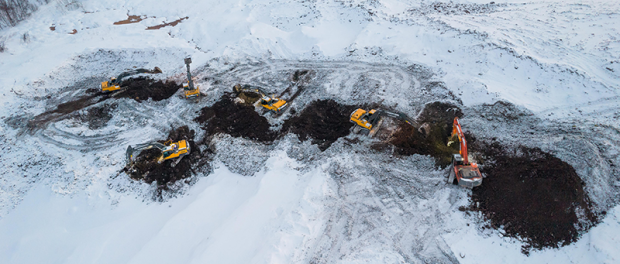Experts reveal what you need to consider before ground excavation during Winter

Winter conditions pose unique challenges to excavation work, significantly increasing the risk of cable strikes. Frozen ground, poor visibility, and adverse weather not only make operations more difficult but also amplify the potential for accidents.
These risks necessitate meticulous planning, technical adjustments, and compliance with safety protocols to protect workers and prevent costly disruptions.
To help avoid potential accidents while excavating during the colder months, experts at Integrated Fencing have detailed what extra considerations need to be taken into account when carrying out work…
Solid Ground
One of the key issues with winter excavation is the effect of frozen soil. When the ground freezes, it becomes compacted and brittle, requiring greater force during digging operations, which increases the likelihood of accidental damage to buried cables.
To address this, contractors should use ground-thawing equipment, such as hydronic heaters, to soften the soil before excavation begins. When working near marked cables, manual excavation with insulated tools is recommended to minimise the force applied and reduce the risk of strikes.
Snow and Ice
Snow and ice further complicate operations by obscuring utility markings, which are critical for identifying safe excavation zones. Clearing snow thoroughly is essential, but it is equally important to reapply utility markers with high-visibility, weather-resistant paint to ensure accuracy.
These precautions should be supplemented by the use of advanced detection technologies. Ground-penetrating radar (GPR) and electromagnetic cable locators, when properly calibrated for cold conditions, provide reliable means of locating underground utilities, even in challenging weather.
Appropriate PPE
Worker safety is another vital consideration during winter. Cold weather reduces dexterity and focus, increasing the risk of errors. Workers should be equipped with appropriate personal protective equipment (PPE), including thermal, high-visibility clothing and insulated gloves that maintain grip and flexibility.
Anti-slip boots and grit should be used to prevent slips and falls, particularly in icy areas around excavation sites. Wearable temperature monitors are also a valuable tool for ensuring workers remain within safe exposure limits during extended shifts in freezing conditions.
Freezing Temperatures
Low temperatures can also compromise the mechanical performance of excavation equipment. Hydraulic systems and batteries often operate less efficiently in the cold, making regular maintenance and the use of winter-specific lubricants essential. Equipment such as detection devices should be checked frequently and recalibrated to account for environmental effects that may reduce accuracy.
Commenting on the insights Hywel Davies, Construction Director and Co-Owner of Integrated Fencing, said: “In addition to these practical measures, adhering to established safety standards is crucial. The Health and Safety Executive’s (HSE) guidance, particularly HSG47: Avoiding Danger from Underground Services, outlines the best practices for identifying and managing risks associated with buried utilities.
“Standards like PAS 128 provide frameworks for underground utility surveys, helping to ensure comprehensive risk assessments. Before we start work on any project, we use our own Integrated Vacuum Excavation tool, which identifies any underground cables prior to digging.
“By taking these steps, excavation teams can significantly reduce the risk of cable strikes during winter. A well-rounded approach that combines technical preparation, worker safety, and regulatory compliance not only ensures the success of excavation projects but also positions contractors as leaders in operational safety.”

